Shinjuku Station Exits: A Beginner's Guide to the Area

Learn about the main exits of JR Shinjuku Station and the major spots near the exits, including the Tokyo Metropolitan Government Building, Kabukicho, and shopping facilities.
Shinjuku: The Heart of Tokyo's Sightseeing and Shopping
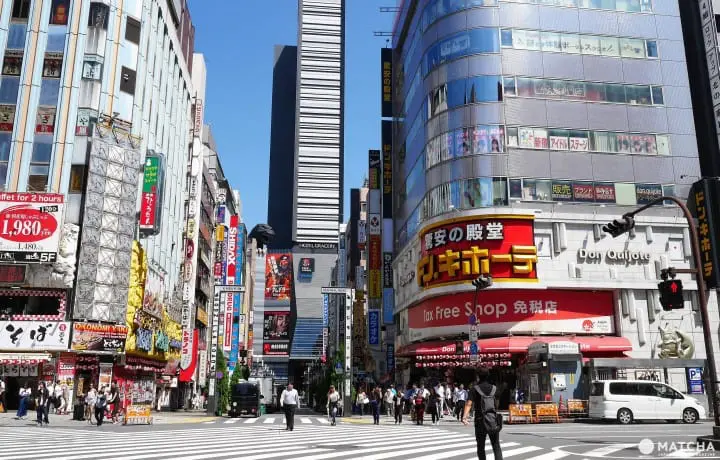
Shinjuku is Tokyo's leading entertainment district. Here you will find all kinds of izakayas and bars, electronics retail stores carrying cutting-edge electronic appliances, and high-end department stores as well as casual fashion malls and drugstores.
The free observatory at the Tokyo Metropolitan Government Building or the Tokyu Kabukicho Tower are two of the must-visit spots in Shinjuku.
Shinjuku Station boasts the greatest number of passengers in the world. Numerous people come and go through this giant station, so it’s not unusual for people to miss their exit. Even the ticket gates are complicated, so exiting out of a gate far from your destination occurs frequently. Even locals sometimes get lost in Shinjuku Station.
Shinjuku Station Exits and Nearby Spots
1. JR Shinjuku Station’s Exits: The Basics
2. East Exit: Shopping District and Kabukicho
3. West Exit: Airport Buses and Skyscrapers
4. South Exit: Shinjuku Bus Terminal, Shinjuku Gyoen, Shopping Facilities
5. Excellent Restaurants in Shinjuku
JR Shinjuku Station’s Exits: The Basics
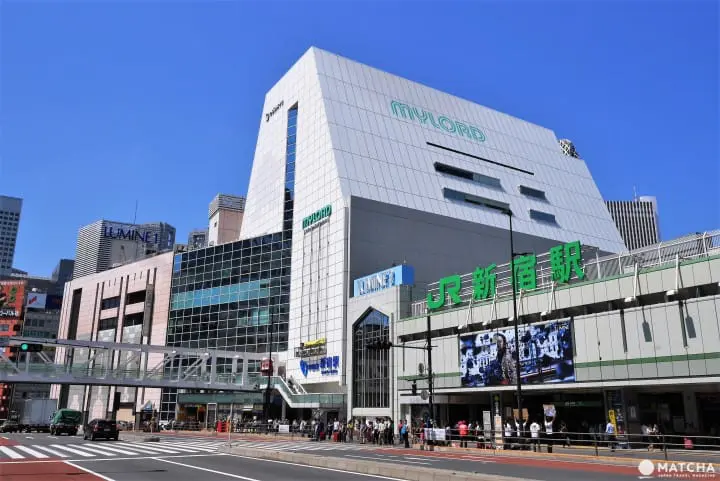
JR Shinjuku Station South Exit
Even if it is just called collectively Shinjuku Station, the station itself services eight lines (*1). Every line has their own ticket gates. We will be introducing the gates for JR Shinjuku Station. Typically, Shinjuku Station exits often refer to the JR exits, so it would be useful to remember them.
There are six JR Line exits and it’s fine to remember them as the East, West, and South exits. You can click on the exit’s name in the table below to jump to information on that exit.
*1: Shinjuku Station train services are the JR Line, Keio Line, Odakyu Line, Tokyo Metro Marunouchi Line, Toei Shinjuku Line, Toei Oedo Line, Keio New Line, and Seibu Shinjuku Line
| Exit | Gate Level | Major Spots |
| East / Central East Exit | B1F | Kabukicho, Golden Gai, Isetan, Matsumoto Kiyoshi |
| West / Central West Exit | B1F | Tokyo Metropolitan Government Observatory, Omoide Yokocho, Yodobashi Camera, Mosaic Street |
| South / Southeast Exit | 2F | Shinjuku Expressway Bus Terminal, Shinjuku Takashimaya, Tokyu Hands, NEWoMan |
Let’s take a look at a detailed explanation of each exit and the sightseeing spots in the area.
East Exit – Shopping District and Kabukicho
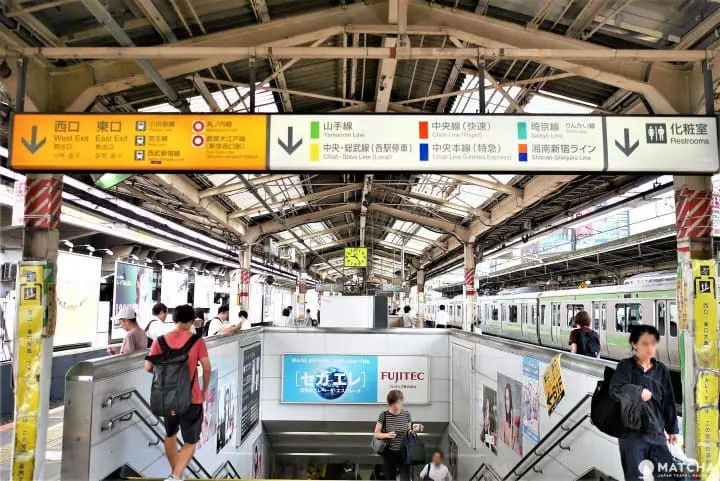
Go downstairs from the JR Line platform reach the East Exit. Continue towards the East or Central East exits which are marked by yellow signs.
There are two ticket gates. The main east exit and the central east exit. Even if you exit from the central east exit, you’ll find yourself at the east exit by heading to the left.
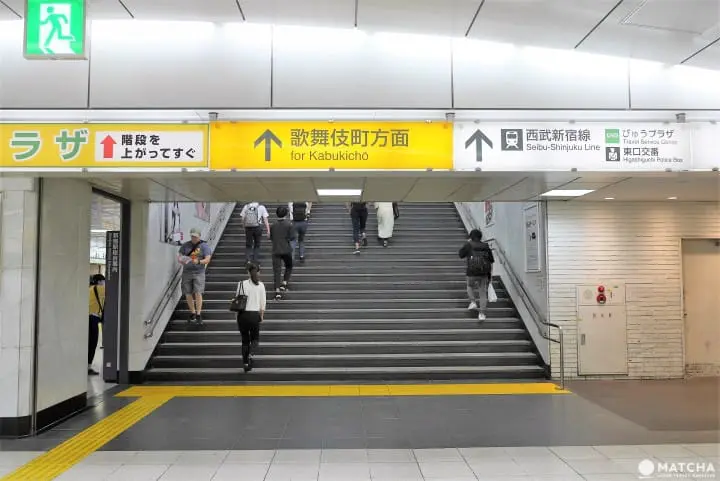
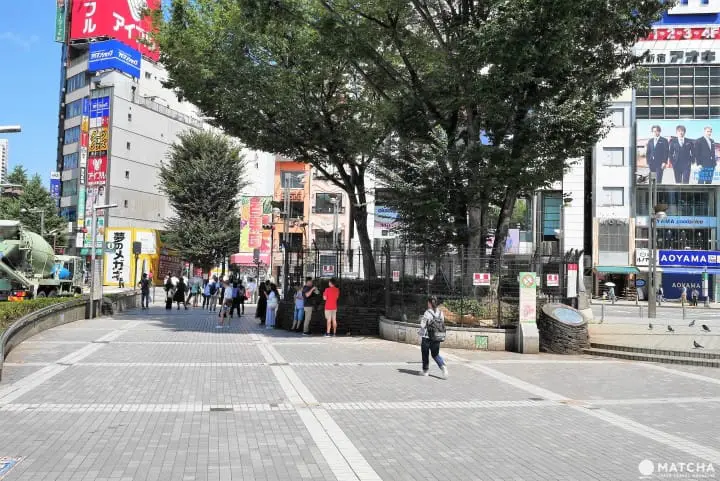
After you exit the gate, go up the stairs diagonally to the left. There is a plaza in the center of the exit. The Kabukicho area is located straight ahead from the plaza while the Shinjuku Sanchome area is to the right.
The Area Around Kabukicho
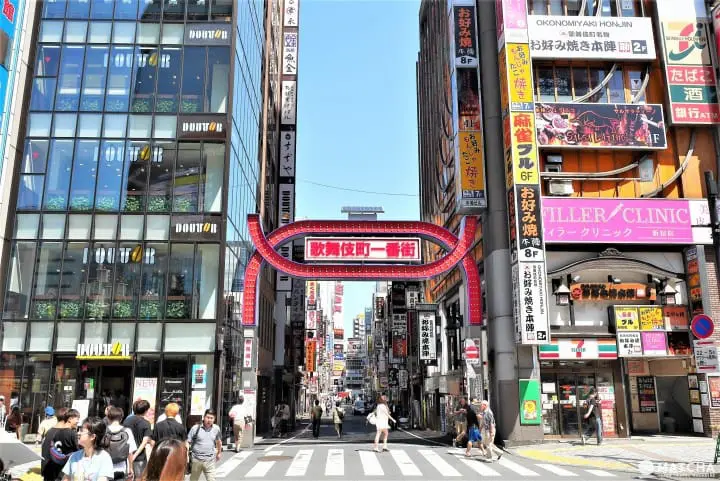
The area around Kabukicho houses many restaurants and bars. At night, the area is filled with people searching for bars as well as those hoping to attract customers. Places where a lot of people gather are also attracting trouble easily. Make sure to visit the area with great caution at night as it is known as one of the less safe areas of Japan.
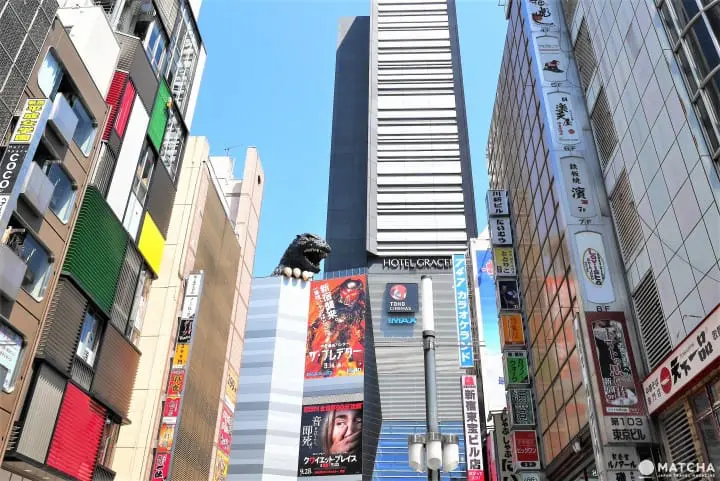
Continue straight from the East Exit to find a movie theater and Hotel Gracery Shinjuku, marked by its gigantic Godzilla head. How about taking a picture of this impressive Godzilla when you visit the area?
| Major Spots | Summary |
| Kabukicho | Japan’s leading entertainment district. |
| Don Quijote Shinjuku Kabukicho |
A discount shop that sells food, drinks, and daily necessities. |
| Samurai Museum | A museum with exhibitions of Japanese katana and armor wearing experiences. |
The Area Around Shinjuku Sanchome
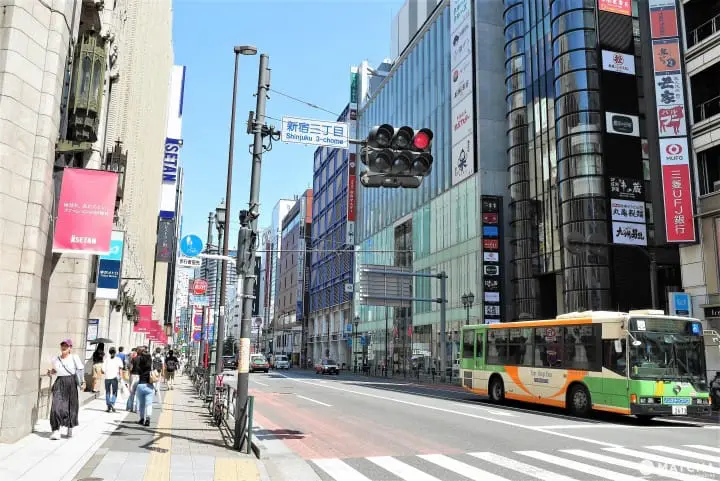
The area around Shinjuku Sanchome is a little more calming than Kabukicho.
The area is scattered with stylish cafés and restaurants. It is also home to popular sightseeing spots such as Golden Gai, Isetan Shinjuku, and the large shopping facility Shinjuku Marui (Japanese only).
| Major Spots | Summary |
| Golden Gai | A crowded street with small bars. Popular for its retro ambience. |
| Isetan Shinjuku (Japanese) | A well-established department store built in 1886. |
| Matsumoto Kiyoshi | A large drugstore that carries cosmetics, medicine, and daily necessities. |
Move Underground on Rainy Days!
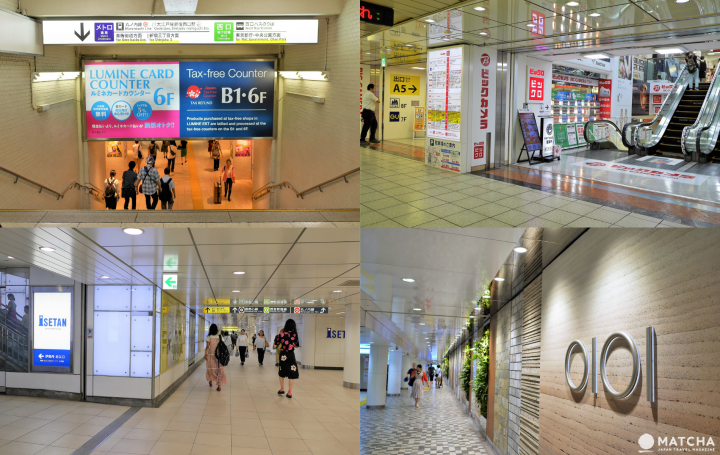
After leaving the east exit gate, continue onto the passageway your left. Go down the stairs to find an underground passageway. If you turn right you’ll find that it connects to the underground entrances of Shinjuku Marui, BICQLO, and Isetan. You can also access each line of Shinjuku Sanchome Station from here.
The passageway also leads to Kabukicho, so you can travel through here on rainy days without having to use an umbrella.
West Exit – Airport Buses and Skyscrapers

Head to the west exit by going down the stairs from the platform. There is a central west exit as well. However, there are few ticket gates and it is easy to confuse the exit for special transfer exits to other nearby lines. Double check if you are really leaving the west exit.
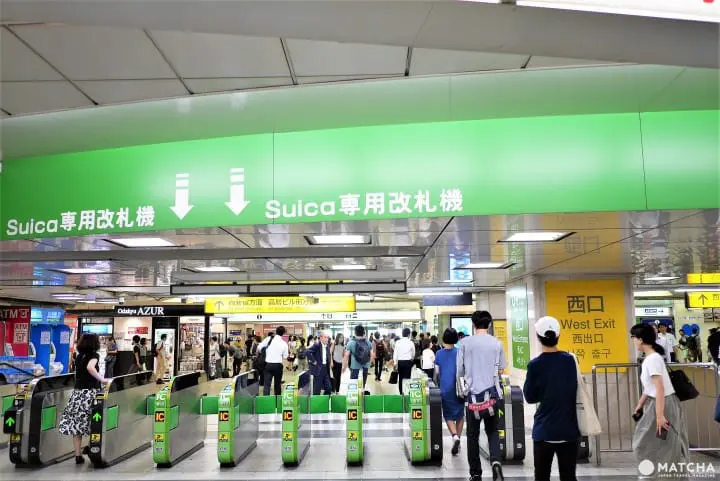
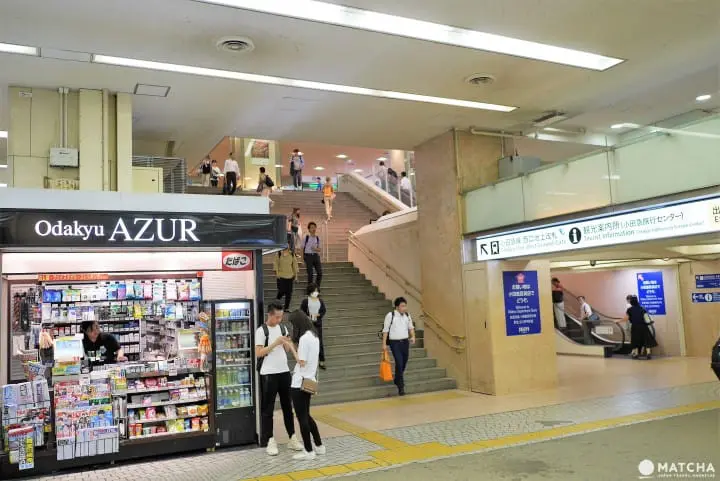
Go through the gates and walk up the stairs next to a kiosk called Odakyu AZUR to get to the ground level.

The west exit is lined with skyscrapers and offices such as the Tokyo Metropolitan Government Building. The Tokyo Metropolitan Government Observatory is the ideal spot for a great view of Tokyo from 202 meters above ground. Bus lines bound for Haneda or Narita Airport also gathered at the west exit.
Central West Exit Gates - Be Careful to Exit Not Transfer!
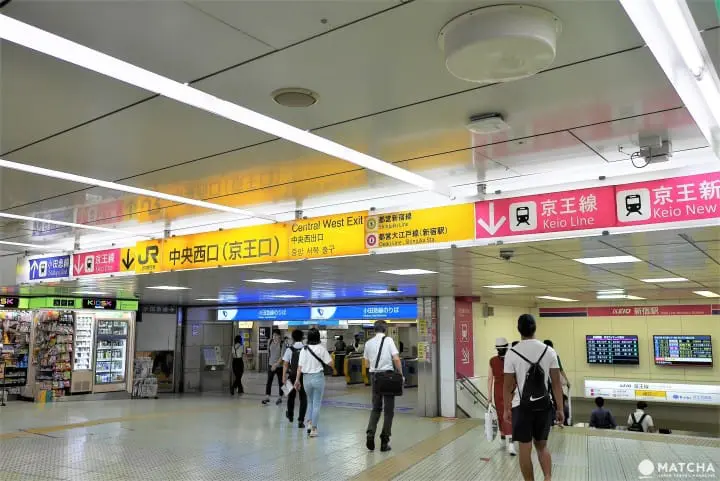
The Central West Exit gates have exit gates as well as a transfer gate. The transfer gate connects directly to the Odakyu and the Keio Line. You can’t reach outside if you accidentally go through these transfer gates, so it is better to leave through the west exit.
Popular Spots Around the West Exit
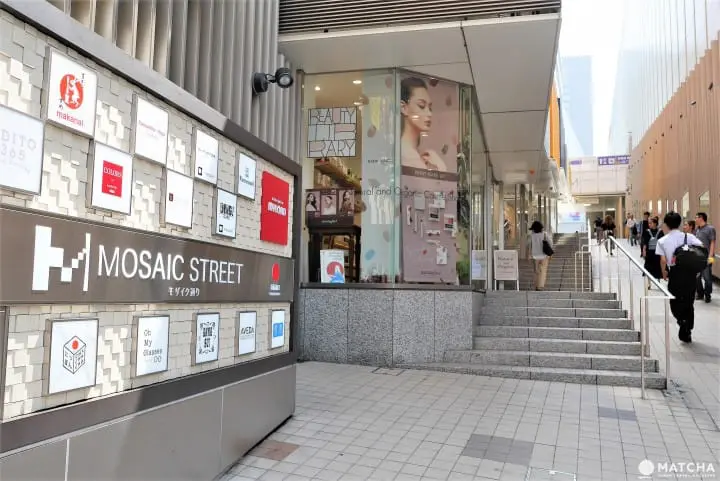
Near the station, you’ll find the Odakyu Department Store and the Keio Department Store respectively managed by the railway companies of the same name. You’ll also find the Mosaic Street, a street lined with general goods stores such as Nippon CHACHACHA to buy Japanese souvenirs.
Shinjuku Omoide Yokocho (only Japanese), is crowded with small shops and a place you might want to go drinking once the night comes.
An area filled with large electronics retail stores such as Yodobashi Camera and the Shinjuku Post Office is also located around the west exit, making it a great area for various types of souvenirs.
| Spot Name | Summary |
| Tokyo Metropolitan Government Observatory (*2) | A spot where you can view of Tokyo from above for free. |
| Mosaic Street | A street lined with general goods stores that extends all the way to the South Exit |
| Yodobashi Camera | Japan’s leading electronics retail store. |
| Shinjuku Omoide Yokocho (Japanese) | A bar district lined with compact izakaya. |
*2: Among the two observatories, the South Observatory will be closed until spring 2019. It is scheduled to reopen after renovation.
South Exit: Shinjuku Bus Terminal, Shinjuku Gyoen, Shopping Facilities
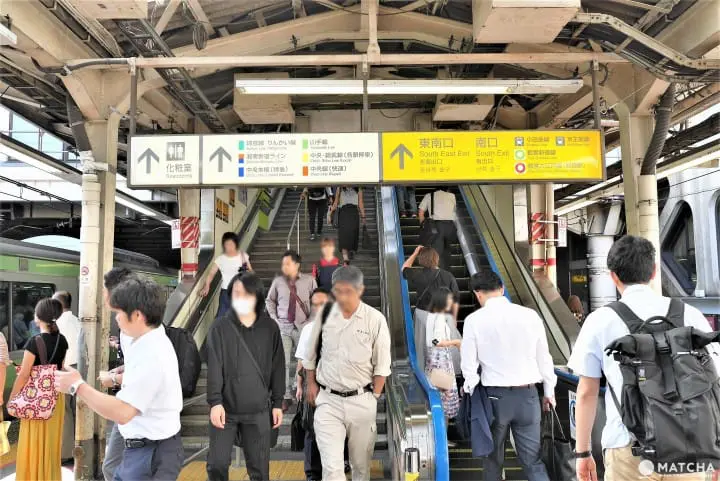
Walk up the stairs from the platform to reach the south and southeast exits. The ascending staircase at the very end of the platform will lead you to Shinnan, Miraina Tower, and the Koshu Kaido Gate, so please check which gate you wish to exit beforehand.
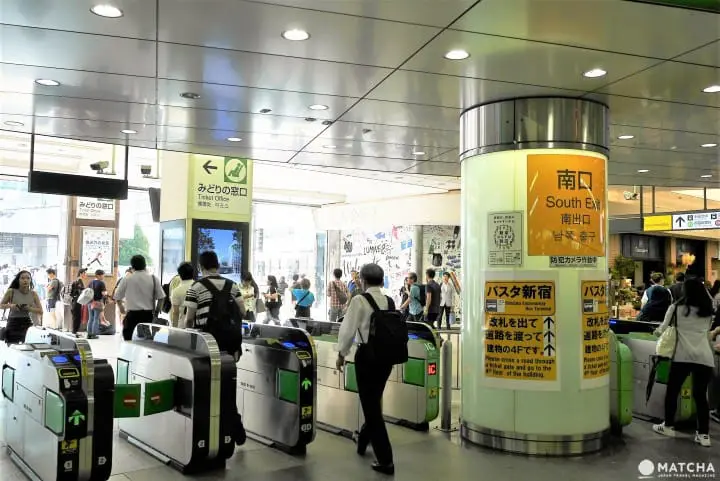
Exit the south exit to find a wide road. Cross the pedestrian crosswalk and you’ll find the Shinjuku Highway Bus Terminal and the NEWoMan building on the opposite side.
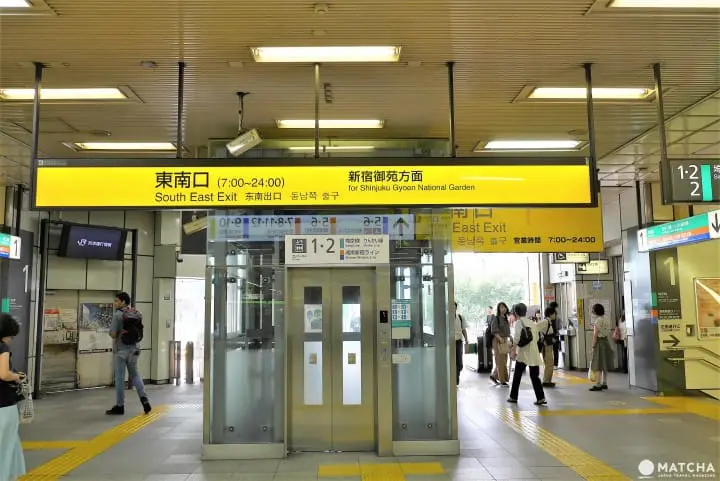
Exit the southeast exit and you’ll find Flags, a shopping center, to your left while a staircase will be in front of you. Traveling to Shinjuku Gyoen is easiest from this gate.
The Shinjuku Bus Terminal: Near the New South Exit
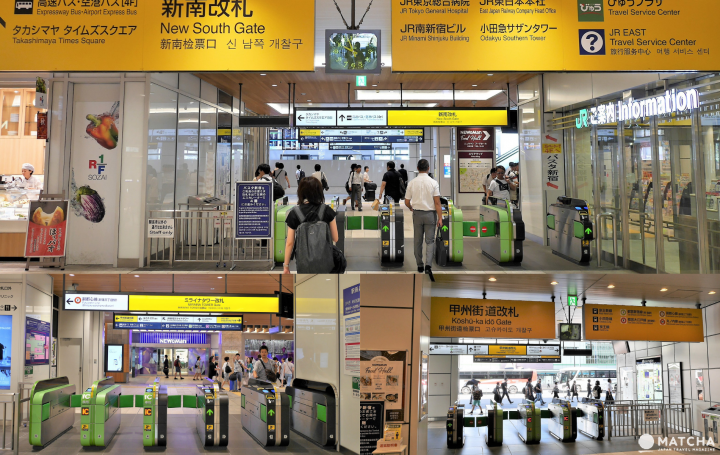
For those who want to reach the Shinjuku Bus Terminal, a bus terminal for long-distance travel, make sure to leave the New South Gate.
You’ll find the south exit, southeast exit, and three ticket gates (New South Gate, Miraina Tower Gate, and Koshu Kaido Gate) all located near one another. Any of the exits below will be convenient if you want to go to Shinjuku Bus Terminal or Shinjuku Takashimaya.
Popular Spots Around the South Exit
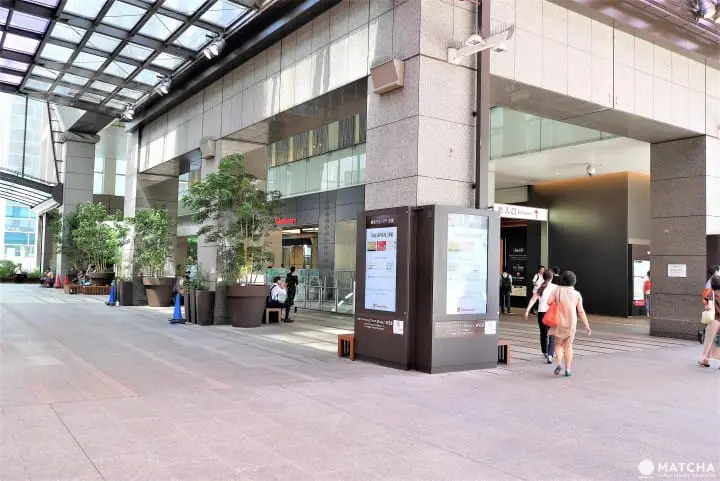
An area located in front of the south exit is home to commercial facilities such as LUMINE 1, 2, Shinjuku Takashimaya, and Hands. The Miraina Tower Gate is directly connected to NEWoMan and bustling with bright shops.
| Spot Name | Summary |
| NEWoMan | A shopping mall with trendy cafés, restaurants, and fashion items. |
| Bus Terminal Shinjuku | A terminal for long-distance buses to other prefectures such as Kawaguchiko, Nagano, and Nagoya. |
| Shinjuku Takashimaya | A famous department store that sells high-end fashion brands and cosmetics. |
| Hands Shinjuku | A store spread across seven floors with items such as stationery, body care, and travel necessities. |
Read also
Excellent Restaurants in Shinjuku
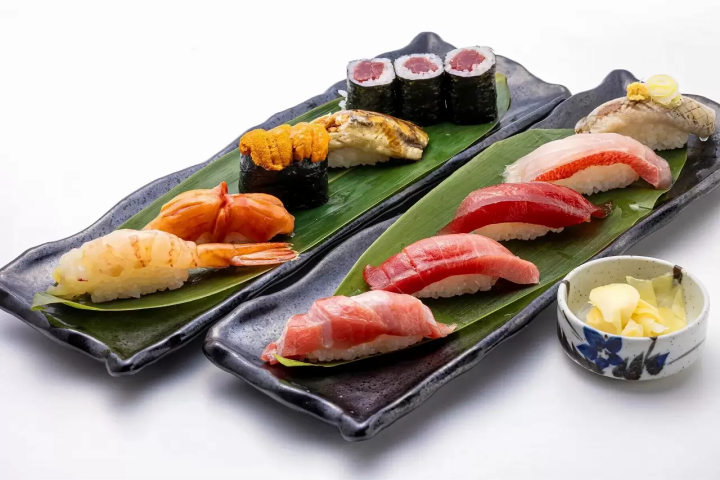
Shinjuku offers a concentration of high-end and accessible cuisine. For exceptional sushi, explore the traditional Edomae style at Michelin One Star Takumi Tatsuhiro (near Shinjuku-Gyoenmae Station), which continues the renowned Sushi Sho tradition. Also near the park, Shinjuku Gyoen Sushi Nishi offers a tranquil space to enjoy sushi with a unique pairing of natural wine and hot sake. Or, enjoy the intimate, six-seat counter at Sushi Sagane (near Nishi-Shinjuku Station). For a lively and accessible experience, visit Tokyo Sushi ITAMAE SUSHI (near Shinjuku Station), located in the iconic Godzilla Building.
The area is also home to elevated dining experiences. Savor high-quality yakiniku and the melt-in-your-mouth tenderness of Japanese black beef at award-winning Yakiniku Onuki (near Shinjuku-Gyoen Station). For tableside theater, Teppanyaki Kobe beef Pandora Takumi (near Shinjuku Station) offers A5-grade Kobe beef cooked to perfection.

Enjoy modern French cuisine with breathtaking views at Restaurant Bellustar (near Seibu-shinjuku Station), or experience refined, seasonal kaiseki at the hospitality-focused Chiso Kondo (near Yotsuya-sanchome Station).
Finally, discover specialty spots like Bib Gourmand recognized Fry-ya (near Takadanobaba Station), which offers creative, bite-sized fried delicacies. For unique Japanese seasonal cuisine with Western influences, visit Akebonobashi Kazu (near Akebonobashi Station).
Enjoy Shinjuku Efficiently
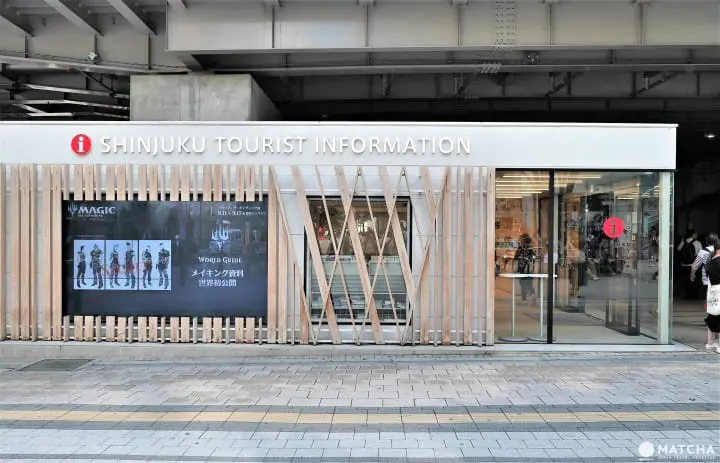
TOURIST INFORMATION located immediately down the stairs from the Southeast Exit
By carefully choosing which exit to use, you can smoothly arrive at your destination without getting lost even in a place as big as Shinjuku Station. Have a pleasant trip and feel free to refer to this article during your travels.
FAQ
Is Shinjuku the busiest station in the world?
Shinjuku Station in Tokyo is one of the busiest train stations in the world in terms of passenger traffic. It consistently ranks among the top contenders for the title of the world's busiest station due to the immense volume of commuters passing through its gates on a daily basis. However, other stations like Tokyo Station, also located in Tokyo, and some stations in major cities like Beijing, Shanghai, and New York City also contend for the title of the busiest station in the world. Rankings can vary based on different criteria such as the number of passengers, trains passing through, interchange facilities, and overall size.
What is the main station in Shinjuku?
The main station in Shinjuku is simply called Shinjuku Station. It is a major railway station in Tokyo and holds the distinction of being one of the busiest transport hubs in the world. Serving numerous railway lines, including JR (Japan Railways) lines, private railway lines, and the Tokyo Metro, Shinjuku Station plays a pivotal role in facilitating commuter traffic within Tokyo and connecting passengers to various destinations within the city and beyond. As a central point of transportation in Shinjuku, this station serves as a critical node for travelers navigating Tokyo's extensive rail network.
What are the exits of the Shinjuku train station?
Shinjuku Station in Tokyo features a complex network of exits catering to different parts of the surrounding area. Key exits at Shinjuku Station include the East Exit leading to Shinjuku Sanchome and Kabukicho, the West Exit offering access to the Tokyo Metropolitan Government Building, the South Exit connecting to Takashimaya Times Square, and the New South Exit primarily serving the Shinjuku Bus Terminal, Odakyu line, and shopping districts. Additionally, the Central East Exit is situated centrally, granting access to various shopping centers and office buildings. These exits play a crucial role in guiding commuters and visitors to specific destinations within Shinjuku and its adjacent areas, streamlining navigation within the extensive station premises.
Why is Shinjuku Station so big?
Shinjuku Station's immense size is primarily due to its role as a vital transportation hub in Tokyo, connecting multiple railway lines and serving a massive daily influx of commuters. The station's expansion over the years reflects the growth of Tokyo's urban landscape, the need to manage high passenger volumes efficiently, and its pivotal position in the bustling Shinjuku business district.
What is the busiest time at Shinjuku Station?
Shinjuku Station, located in Tokyo, is renowned for its bustling atmosphere, ranking among the world's busiest train stations. The peak periods at Shinjuku Station occur during weekday rush hours, notably in the mornings from around 8:00 AM to 9:00 AM as individuals commute to work or school, and in the evenings between 6:00 PM and 8:00 PM when they return home. These times witness intense crowds, long queues at ticket gates, and packed trains, making for a challenging passage through the station. To ease your travel experience, it's advisable to steer clear of these congested peak hours if feasible.
This is the official account of MATCHA's editorial department. Our articles feature useful travel information for visitors to Japan, from how-to guides to recommended places to visit.









































![[2026] Top 5 Strawberry Picking Spots in Tokushima, Naruto| Farms and Access Guide for January to May](https://resources.matcha-jp.com/resize/720x2000/2025/03/06-227165.webp)
![[Yamanashi/ Hokuto City] 4 Hot New Spots Opening in 2026](https://resources.matcha-jp.com/resize/720x2000/2025/12/12-252747.webp)


